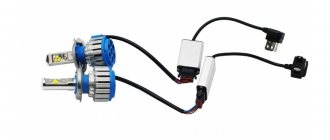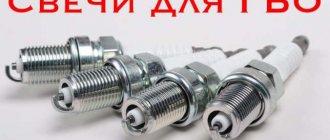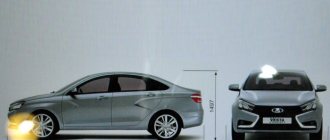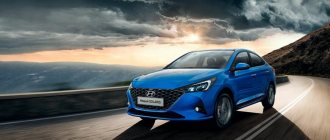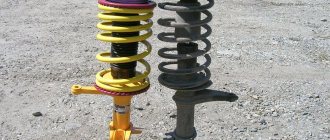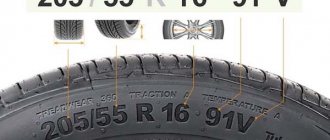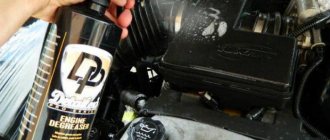Among the electrical equipment system, headlights are considered a very important element, since no, even the most advanced electronics help to qualitatively improve visibility at night or in heavy fog. Therefore, how safe the trip will be depends on the types of car headlights, and every car owner must understand this. Depending on the location of the headlights, there are front and rear, but it is the former that are considered priority. According to their functionality, they are divided into several classes:
high-beam headlights capable of providing comfortable light at a distance of up to 300 meters, even at high speeds;
low beam optics, which shine brightly (up to 50 meters), but only in a limited space;
fog lamps, which are additional lamps used in bad weather conditions; their main disadvantage is that such car headlights, the types of which can be different in design, when used with low-beam headlights, strongly blind other drivers;
running lights designed for daytime use - they help to further identify the vehicle in poor visibility conditions;
side lights installed both front and rear.
In turn, according to the principle of operation, car headlights are divided into 3 groups - halogen, xenon and LED. The prices for them are very different, but still the most interesting are the LEDs that have appeared recently. However, it is worth considering in more detail other types of light optics for cars, because they are still installed even on premium imported models.
From locomotive to car
In 1896, just 10 years after Karl Benz received a patent for his first car, aircraft designer Louis Blériot proposed using acetylene headlights on cars.
Spotlights of a similar design were actively used at that time on... steam locomotives! Photo: Tomislav Medak/Wikipedia.org
Such headlights illuminated the road quite well, but their active use was accompanied by “dancing with a tambourine” for the driver. To turn on the headlights, you had to open the acetylene supply valve, then open the glass covers of the headlights themselves and, finally, light the burners with a match. At the same time, acetylene was produced directly on the go: in a separate tank, divided into two compartments, into which calcium carbide had to be poured and water added before the trip.
Acetylene lamps, by the way, are still used today. For example, at lighthouses located in remote areas - if it is impossible or unprofitable for them to run a separate power line or install an autonomous generator.
High beam
From the name it already becomes clear that in this case a much larger section of the road is illuminated. A more intense and bright stream of light allows you to illuminate the road in front of the driver for the next two hundred to three hundred meters. But such a flow will definitely blind oncoming cars, so it should only be used on those sections of roads where there are no other cars.
- Some modern cars are equipped with an adaptive lighting system; it allows you to minimize the risks of bright long-range lighting of the roadway.
Headlight device
Regardless of the type of headlights, there are three main elements that ensure the operation of the optics.
Light source
The light source is the main element of any headlight. The most common source in headlights is halogen bulbs. Relatively recently, they were competed by xenon lamps, and even later by LED devices.
Reflector
The reflector is made of glass or plastic with a small coating of aluminum. The main task of the element is to reflect light fluxes emanating from the source and enhance their power. Correctors and light screens help direct the light beam in a given direction.
Based on their characteristics, reflectors can be divided into three main types.
- Parabolic reflector. The most affordable option, distinguished by its static design. Headlights with such a device cannot be adjusted by changing the brightness, intensity and direction of the light rays.
- Free form reflector. It has several zones that reflect individual parts of the light beam. The light in such headlights remains static, but when scattered there is much less light loss. Also, headlights with a free-form reflector are more comfortable for other drivers.
- An ellipsoidal reflector (lens optics) is the most expensive, but at the same time the highest quality option, eliminating light loss and dazzling other drivers. The scattered flow of light is amplified by an elliptical light reflector, and then redirected to a second focus - a special partition that again collects the light. From the shield, the flow is re-scattered towards the lens, which collects the light, truncating or redirecting it. The main disadvantage of the lens is that with active use of the car its stability may decrease. This, in turn, will lead to malfunctions or light loss. The defect can be eliminated only with the help of professional lens adjustments performed in a car service center.
Types of headlight reflectors
Diffuser
The light diffuser in a car is the outer part of the headlight, made of glass or transparent plastic. On the inside of the diffuser there is a system of lenses and prisms, the size of which can vary from a millimeter to several centimeters. The main task of this element is to protect the light source from external influences, disperse the beam, directing the flow in a given direction. Different shapes of diffusers help regulate the direction of light.
Projector, bifocal headlights
The latest generation of headlights are bifocal projector ones. They will provide the driver with the best visibility and safety while driving. As a rule, they are installed on heavy vehicles and expensive foreign cars.
The second focus collects the rays in a reflector and directs them through the screen, re-focusing with the lens. Light performance of projector headlights - 50%
.
These headlights are significantly more expensive than the two previous types.
Lensed optics: what is it, how does it work and what are its advantages?
Lensed optics - a similar phrase comes up quite often today. Headlights with lenses are very popular due to their efficiency, as well as their beautiful and stylish appearance.
Like most new products, lensed optics were initially available only for expensive business and premium class cars. However, today lenses are found on many cars, and, if desired, anyone can install lenses on their car. Paired with bright xenon bulbs or powerful LEDs, the lenses provide a beautiful light that can't be compared to conventional reflector headlights.
The design features of lens optics allow it to generate a more powerful beam of light, which is capable of illuminating a much larger area of the road than ordinary headlights with reflectors. The light beam is better focused and shines exactly where it was sent, without scattering throughout the road.
What bulbs are suitable for headlights?
Often on auto forums you read statements from “experienced” drivers that “lensed optics are designed exclusively for xenon.”
Let's start with the fact that any xenon lamp has the letter S or R in its name. S-type is intended for ellipsoidal reflectors, R-type for reflective ones.
S-type xenon lamps are used in bi-xenon . When switching to low beam, the light of the lamp does not decrease, as many people think, but a mechanical curtain is used, which rises and covers the lower part of the reflector, forming a cut-off line.
R-type xenon lamps are designed for reflector reflectors and generally operate as low beam lamps. The function of a mechanical shutter is performed by a filter located on the lamp bulb itself. Essentially, this is a protective coating that does not transmit light to the lower reflector and forms the same STG.
Daytime running lights
Today, daytime running lights are becoming increasingly popular and on many foreign cars they are installed at the factory. At the same time, traffic regulations in many countries around the world require that daylighting be turned on outside the city. Manufacturers met their customers halfway and made running lights available in the “base”.
Daytime running lights are located on the front of the car. They emit a bright white light that is clearly visible even during daylight hours. The advantage of daytime running lights is undeniable - they consume a minimum of electricity, do not increase fuel consumption and do not wear out headlights.
How to increase the brightness of headlights?
Another common question from motorists: “Is it possible to install a lamp with a higher power than the manufacturer recommends?” If the headlight says 55W, then you should not exceed this figure.
Firstly, the energy consumption of the on-board network will increase. Secondly, a more powerful lamp will overheat the headlight, which will ultimately damage the entire unit. If you are not satisfied with the brightness of the lamp, you do not have to increase its power. For example, the new generation of NIGHT BREAKER LASER is the brightest OSRAM halogen car lamp ! At the same time, the power consumption is still the same 55 W.
Innovative laser technologies provide up to 150% more brightness than minimum specified requirements, and a carefully designed filament structure allows for additional light output. The light beam from this lamp is up to 150 m longer, and the emitted light is up to 20% whiter. We will tell you later in a separate article how the designers managed to achieve such outstanding performance.
OSRAM NIGHT BREAKER LASER high-brightness halogen lamps are available with base H1, H3, H4, H7, H8, H11, HB3, HB4.
Types and design of headlights
Car headlights can be divided into two types based on their location in the car body:
- front;
- rear;
- lateral.
In addition, headlights are divided according to their functions:
- High beam headlights. With their help you can illuminate a large section of the road. They have a symmetrical beam aimed directly in front of the vehicle. Should turn off when other vehicles approach. Emit white light.
- Low beam headlights. This type of headlight is used to illuminate the road directly in front of the car and the shoulder area. They have an asymmetrical flow of white light.
- Fog lights. They are used in foggy conditions, as they are capable of creating a broadband horizontal beam. Due to the principle of diffusion, light is not reflected from water droplets at high humidity. Using these lights in fog will be safer than using near or distant lights. May be white or yellow.
- Direction indicators. They indicate the direction of travel and inform other motorists about the situation on the road. They emit yellow or amber light.
- Parking lights. Designed to indicate a vehicle in poor lighting or low visibility conditions. Painted red.
- Stop lights. They light up automatically when the car brakes. Emit a bright red light.
- Reverse signal. Lights up when reversing. Must be white.
- Daytime running lights (DRLs). Designed to illuminate the road during the day. According to the legislation of the Russian Federation, low-beam headlights can be used instead of DRLs.
Typically, the headlight housing includes low and high beam lamps, as well as turn indicators. Inside the taillight there are turn indicators, side lights, brake lights and reverse lights. Fog lights can be located both in the front and rear of the car. Sometimes a separate building is allocated for them.
The headlight housing contains many optical elements
However, this division is not the only correct one: depending on the manufacturer and model of the car, functional headlights may be located in the same or different housings. However, all design decisions must be consistent with the safety standards of the country in which the model will be implemented.
There are various headlight designs. But all of them can be divided into the following components:
- frame;
- Light source;
- reflector.
- diffuser or lens;
- curtain
The housing contains the entire headlight structure. It protects all other elements from dust and moisture, and also protects from external influences.
Xenon lamps are a type of gas discharge lamps
A reflector is used to form a single beam of rays emitted by a light source. Depending on the type of headlight design, it can be parabolic, ellipsoidal or free-form. The generated light stream hits the lens. The purpose of the metal curtain is to regulate the switching from low to high beam (if the headlight is dual-mode).
Thus, depending on the type of design, all headlights can be divided into three groups.
- Parabolic - in them the reflector has the appropriate shape and directs the flow of light along a straight axis. This type of headlights is the most common.
- Free-form (another name for FF reflectors) - their design is divided into several cells of various shapes. This allows you to create a wider and more distant beam of light.
- Lenses are the most modern type of headlights. It has an ellipsoidal reflector. Due to the complex optical system and the presence of a lens, it creates a much brighter beam and a clearer cut-off line than the previous two types.
It is about lens headlights that we will talk about.
Design and types of car headlights
The central place in the vehicle lighting system is occupied by the front headlights. They ensure safe travel in the evening and at night by illuminating the road in front of the vehicle and informing other drivers that a vehicle is approaching.
- Front headlights: design elements
- dipped headlights
- High beam headlights
- Headlight device
- Light source
- Reflector
- Diffuser
- Types of light sources
- Incandescent lamps
- Halogen lamps
- Xenon (gas discharge) lamps
- LED bulbs
- Innovative developments
- Ways to control head light
What is the responsibility for installing xenon lamps in headlights with reflectors?
As we have already said, the installation of xenon light sources in car headlights equipped with reflectors for halogen lamps is prohibited.
Thus, in accordance with Part 3 of Article 12.5 of the Code of Administrative Offenses of the Russian Federation, driving a vehicle on the front of which are installed lighting devices with red lights or red reflective devices, as well as lighting devices, the color of the lights and the operating mode of which do not comply with the requirements of the Basic Provisions for approval of vehicles for operation
and duties of officials to ensure road safety entails deprivation of driver's license for a period of 6 months to 1 year with confiscation of xenon equipment and lamps.
That is, in other words, if you illegally install xenon lamps on your car in headlights that are not intended for this type of light source, then you will not be fined, but will immediately be deprived of your driver’s license, and after the expiration of the deprivation period you will have to retake the theoretical exam.
Selection of main headlights
Since laser headlights are not yet on sale, we will be looking at halogen and xenon headlights. LED analogues are installed by the manufacturer or after an accident due to the high cost of the unit.
Halogen
When choosing halogen lamps, you must first consider the power you need, which, in fact, determines the luminous power of the lamp. It is best to purchase a balanced lamp with a power of about 80 W; it consumes little electrical charge. If you constantly have to drive in off-road conditions or the road surface has many potholes, then it is worth purchasing headlights with a power of 100 W. Based on reviews from motorists around the world, a rating of halogen headlight manufacturers has been formed, with Osram and Phillips taking the leading positions. The products of these companies are distinguished by their reliability in all weather conditions and have a long service life.
Xenon
When choosing xenons, it is necessary to take into account the color temperature. The most extraordinary solution would be to buy headlights in the 5000 Kelvin range. Such headlights will not create a strong luminous flux, so you can move comfortably in conditions of snowfall, fog and rain. Analogues with a range of 12000 Kelvin look ideal, but are not very convenient to use. According to the rating, the best company is Hella, and when buying budget devices, preference should be given to MTF and Sho-me.
It is worth noting that special kits that are suitable for self-conversion of a car are now very popular on sale. Moreover, not only halogen units are sold this way, but even xenon and LED ones. Experts do not recommend doing this on your own, because a car enthusiast without special equipment will not be able to calibrate the optics or correctly install lenses and reflectors. The result of independent work may be the absence of light on the roadway and blinding drivers of oncoming cars.
SECTION 3: Other Important Information/Miscellaneous
Now that we've covered all the different types of automotive front optics technologies, it's time to talk about some of the issues that arise. So, for example, let's find out whether it is possible to use xenon lamps in halogen headlights and vice versa?
As a rule, to use xenon lamps, the front optics must be equipped with a lens that projects light onto the road. Also, xenon optics are required; as a rule, they are equipped with a headlight range control.
Mostly these days, automatic headlight leveling is used, which changes the angle of the lens in order to protect oncoming drivers from the bright daylight of xenon headlights. The angle changes depending on the number of passengers inside. In addition, all xenon headlights must be equipped with an optics washer, since a xenon light source is not effective with dirty headlights.
As for halogen lamps, unlike xenon lamps, they can be installed in lensed optics. What about LEDs? Since LED lamps, as a rule, have a directional light source, it is not safe to install them in a headlight with conventional reflectors, since in this case the efficiency of road illumination will be low. Therefore, most automakers equip LED optics with lenses that project light from the LEDs onto the road. More about this below:
Adaptive (turning) headlights
The main feature is that the headlights change direction in the direction the wheels are turning. Such headlights are connected to an on-board computer, sensors for steering wheel rotation, speed, vehicle position relative to the vertical axis, etc. The direction of the headlights is changed by a built-in electric motor. Such equipment changes direction not only horizontally, but also vertically, which is especially effective when traveling over hilly areas. Additional features of adaptive headlights: automatic switching from high beam to low beam when an oncoming vehicle approaches; when the EPS stability control system is activated, the headlights are locked in the central position - so as not to interfere with the driver during emergency maneuvering. This design uses bi-xenon headlights.
Typically, high-end cars are equipped with adaptive headlights; such equipment is not always included in the list of options.
Some cars have additional lights in the headlights that turn on when the steering wheel is turned sharply and illuminate the direction in which the car is turning. In addition to illumination when turning, this version of head optics also helps when driving in a straight line. In the “motorway” mode (the term “highway” is also used), the lights shine directly, and in the city mode the beam of light is wider and the side space is visible. This option can have different types of lamps.
The functionality of adaptive headlights may vary depending on the car model.
Which bulbs are most suitable for additional headlights?
The additional low and high beam headlights, as well as the standard elements, can have different lamps installed:
- halogen;
- xenon;
- LED
Halogen lights do not shine very brightly and are usually used for fog lights. The light beam of halogen lamps has a yellow tint, which does not reflect raindrops passing through it. One of the advantages of such lamps is their low cost.
Xenon elements have a bright white light and are suitable for almost any type of lighting, however, xenon is very blinding and such lamps can only be used on automatic telephone exchanges that require the installation of such optics. Otherwise, you can lose your rights for up to six months.
If we talk about LED additional headlights for a car, then they are the best option. Firstly, they do not blind other road users. Secondly, LED headlights have a long service life due to their resistance to vibrations. And of course, we must not forget that diode lighting consumes a minimum of energy.
LED headlights are divided into several categories, depending on the purpose for which they will be used. They also differ in:
number and type of LEDs (for example, LED or Cree lamps with 6, 12 or more crystals); type of fastening system (universal or special, which is used for motorcycles and ATVs); distinctive features (case impregnation with water-repellent agents, chrome plating, glass color and much more); LED headlights can be manufactured not only in a standard form, but also in the form of:
Modular beams, which consist of a large number of small light bulbs. These headlights create a powerful and bright light and fit perfectly into the appearance of the car. Single-row and double-row beams. Such headlights also have a different number of light elements. The more of them there are, the brighter such a headlight will shine.
Based on the above, we conclude that additional LED low beam headlights are the best choice. All that remains is to decide on the manufacturer. Today this is the German company Hella KG Hueck & Co, which is deservedly considered the world leader in the sale and production of automotive optics.
Car lights
It's no secret that lighting and light signaling systems in the form in which we are accustomed to seeing them on modern cars did not appear immediately, but relatively recently. Automotive optics have come a long way since their appearance on vehicles. If we do not take into account the lanterns that ran on kerosene, which did not illuminate the road, but rather served to indicate the moving crew, then the date of birth of automobile lighting can be considered 1896 - it was then that aircraft designer Louis Blériot proposed the use of acetylene lamps on cars.
To “turn on” such a simple design headlight required time and some skills. To begin with, it was necessary to pour calcium carbide F (Fig. 1) into the container provided for this purpose, then pour water through plug H. Valve G can be used to regulate the amount of water supplied to the reactor tube. During the reaction of the carbide with water, flammable acetylene gas was released, which was supplied through hose D to burner A in the headlight. Some time after the reaction began, it was possible to light the burner with a match. The burner flame was reflected from mirror B and focused on the road.
Rice. 1. Acetylene headlamp design
The light from the acetylene headlight was of a warm spectrum (Fig. 2) and, thanks to the parabolic reflector invented by Ivan Kulibin, illuminated the road in front of the car for a hundred meters. The main disadvantage of this type of headlight was the short operating time due to the need to replenish the supply of carbide and water, as well as remove soot and soot from the burner and reflector.
Rice. 2. Acetylene headlight
A further evolution of automobile headlights was headlights with incandescent lamps. The first headlight of this type was manufactured in 1899 by the French. It was made according to Edison’s model with a carbon filament (Fig. 3), however, this design turned out to be unsuccessful and of little use for a car - high power consumption required the presence of heavy batteries on the car, which, in turn, needed frequent charging - generators for that torque was not used in cars. In addition, the carbon filaments of incandescent lamps were very sensitive to shaking on uneven surfaces and quickly failed.
Rice. 3. Incandescent lamp with carbon filament (left) and the first incandescent lamp with tungsten filament
They turned out to be much more economical than lamps with carbon filaments and were almost not afraid of the car shaking on uneven surfaces; moreover, the refractoriness of tungsten made it possible to significantly increase the service life of the filament, which did not burn out. In 1906, the American company bought a patent for a tungsten filament from Lodygin and began production of similar lamps. However, mass installation of such light sources on cars became possible after the advent of the car generator in 1911. The first car that was serially equipped with headlights with tungsten filament lamps and a generator was the Cadillac Model 30 Self Starter (Fig. 4), and the generator was also a starter. That is, the generator started the engine using the energy of the batteries, and after the engine started, it charged the batteries. A little later, based on this scheme, the German company advertised the “Bosch-Light” set, which allowed the lighting system to operate in a closed cycle, regardless of charging stations. "Bosch-Light" consisted of headlights, a generator, a battery and a relay regulator to control battery recharging. The system turned out to be so successful that in just a year more than 3 thousand kits for installation on cars were sold.
Rice. 4. Cadillac Model 30 Self Starter
Headlights with incandescent lamps created another problem - they blinded oncoming drivers with bright light. At first they tried to combat this mechanically - by installing various valves and curtains on the outside of the headlights. Thus, she proposed optics in which, with the help of electromagnets, a yellow glass filter was pulled out in front of the light bulb. Then they began to reduce the brightness of the light, adding additional resistance to the system, which reduced the filament's intensity. And in 1919, Bosch found the optimal solution - it was a light bulb with two filaments, for high and low beam. Then, instead of ordinary glass, a diffuser with prismatic lenses was used, deflecting the light down onto the road. Since then, designers have been faced with two opposing tasks: to illuminate the road as much as possible and to prevent oncoming drivers from being blinded. Around the same time, incandescent lamps began to be filled with a mixture of argon and nitrogen, which prevented the evaporation of tungsten from the filament, which had a beneficial effect on the longevity of the lamps. In the 50s, their service life began to be extended with the help of halides - gaseous compounds of iodine or bromine. In such a lamp, halogen gas combined with evaporated tungsten, then at high temperatures this compound disintegrated into its constituent substances, and tungsten atoms settled on the spiral. The first halogen lamp was introduced to the automotive market in 1962. The technology of filling the flask with halogens made it possible to increase the operating temperature from 2500K to 3200K. This increased the light output by one and a half times - from 15 lm/W to 25 lm/W. At the same time, the lamp life has doubled, heat transfer has decreased from 90% to 40%, and the dimensions have become smaller (the halogen cycle requires proximity of the filament and the glass bulb). The main step in solving the problem of glare was made in 1955 - the French proposed the idea of asymmetrical distribution of low beam so that the right side of the road was illuminated further than the left. And two years later, asymmetrical light was legalized in Europe. Until 1961, car headlights were round in shape - for the first time, rectangular headlights were installed on the Citroen AMI 6 (Fig. 5). Such headlights were more difficult to produce and required more engine compartment space, but along with smaller vertical dimensions they had a larger reflector area and increased light output.
Rice. 5. Citroen AMI 6
To make such a headlight shine brightly with smaller dimensions, it was necessary to give the parabolic reflector (in rectangular headlights a truncated paraboloid) even greater depth. This was labor-intensive, so the usual optical schemes were not suitable for further development. Then the English team proposed using a homofocal reflector - a combination of two truncated paraboloids with different focal lengths, but with a common focus. The Austin-Rover Maestro was one of the first to try on the new product in 1983. In the same year, she presented a conceptual development - “three-axis” headlights with an ellipsoidal reflector (DE, DreiachsEllipsoid). The fact is that an ellipsoidal reflector has two foci at once. The rays emitted by a halogen lamp from the first focus are collected in the second, from where they are directed into a collecting lens. This type of headlight is called floodlight. The efficiency of the ellipsoidal headlight in low beam mode was 9% higher than the parabolic headlight (conventional headlights sent only 27% of the light to its destination) with a diameter of only 60 millimeters. These headlights were intended for fog and low beam (a screen was placed in the second focus, creating an asymmetrical cut-off line). And the first production car with “three-axis” headlights was the BMW seventh series at the end of 1986 (Fig. 6). Two years later, Hella introduced Super DE ellipsoidal headlights. This time the profile of the reflector was different from a purely ellipsoidal shape - it was “free”, designed in such a way that the main part of the light passed over the screen responsible for the low beam. Headlight efficiency increased to 52%.
Rice. 6. BMW 7 Series E32
Further development of reflectors would be impossible without mathematical modeling - computers make it possible to create the most complex combined reflectors. The reflectors of modern headlights are divided into segments, each of which has its own focus and focal length. Each “slice” of the multifocal reflector is responsible for illuminating “its own” section of the road. The light of the lamp is used almost completely - with the exception of the end of the lamp, covered with a cap. And a diffuser, that is, glass with many “built-in” lenses, is no longer needed - the reflector itself does an excellent job of distributing light and creating a cut-off line. The efficiency of such headlights, called reflective, is close to that of floodlights. Modern reflectors are “formed” from thermoplastic, aluminum, magnesium and thermoset (metalized plastic), and the headlights are covered not with glass, but with polycarbonate. The first plastic lens appeared in 1993 on the Opel Omega sedan. This made it possible to reduce the weight of the headlight by almost a kilogram. But polycarbonate “glass” resists abrasion much worse than real glass. Therefore, brush headlight cleaners, which Saab introduced back in 1971, are no longer made. A new stage in the development of car lighting was the installation of headlights on a car with a gas-discharge light source (Fig. 7), simply “xenon”. The fundamental difference between such lamps and halogen lamps is that in them the light is emitted by an electric arc that occurs between two electrodes in an inert gas environment when high-voltage voltage is applied. For the first time, such lamps were installed as standard on the BMW 7 Series in the E38 body since 1991.
Rice. 7. Gas discharge lamp
Gas-discharge lamps are much more efficient than the most advanced incandescent lamps - not 40% of the electricity is spent on useless heating, but only 7-8%. Accordingly, gas-discharge lamps consume less energy (35 W versus 55 W for halogen lamps) and shine twice as brightly (3200 lm versus 1500 lm). And since there is no filament, there is nothing to burn out - xenon gas-discharge lamps last much longer than conventional ones. But gas-discharge lamps are more complicated. The main task is to ignite the gas discharge. To do this, you need a short pulse of 25 kilovolts - and alternating current, with a frequency of up to 400 Hz! A special ignition unit is used for this. Once the lamp is lit (it takes some time to warm up), the electronics reduce the voltage to 85 volts, enough to maintain the discharge. The high luminous efficiency of gas-discharge light sources required the introduction of an automatic light beam tilt corrector, as well as a high-pressure headlight washer (Fig. 8). Without all this, oncoming drivers may be severely blinded.
Rice. 8. Headlight washer
The complexity of the design and inertia during ignition limited the initial use of gas-discharge lamps to low beam mode. The high beam used a halogen lamp. The designers were able to combine low and high beams in one headlight six years later, and there are two ways to get bi-xenon. If a spotlight is used (like the one invented by Hella), then the switching of light modes is carried out by a screen located in the second focus of the ellipsoidal reflector: in low beam mode it cuts off some of the rays. When the high beam is turned on, the screen hides and does not interfere with the light flow. And in the reflective type of headlights, the “double action” of the gas-discharge lamp is ensured by the mutual movement of the reflector and the light source. As a result, the light distribution changes along with the focal length. But according to French data, by using separate gas-discharge lamps for low and high beams, you can achieve 40% better illumination than bi-xenon. True, not two, but four ignition modules are required—the Volkswagen Phaeton W12, for example, has such headlights (Fig. 9).
Rice. 9. Headlight Volkswagen Phaeton W12
Despite the numerous advantages of gas-discharge lamps over all others, they are gradually losing popularity, giving way to LEDs. Until recently, their light output was too low to be used as a main light, so they were first used in daytime running lights. But technology has developed rapidly, and for the first time, all-LED low beams appeared on the Audi A8. The new Matrix LED headlights are one of the most noticeable innovations on the modernized Audi A8, and noticeable not only externally. The main thing is their filling: a matrix of 25 powerful LEDs (Fig. 10), the independent switching on and off of which allows you to change the shape of the light beam of the headlights and thereby prevent dazzling oncoming drivers and provide illumination of corners.
Rice. 10. Matrix LED headlight Audi A8
Despite the complexity of the design, some premium-segment manufacturers are already beginning to introduce similar technologies into their cars. For example, the new KIA Quoris sports two matrices of four LEDs (Fig. 11). LEDs also have a big drawback - they are very sensitive to ambient temperature and require cooling during operation.
Rice. 11. KIA Quoris LED matrices
Among the latest innovations are the laser headlights of the BMW i8. By laser light, the Bavarians mean phosphor headlights with laser excitation. Each headlight contains three microscopic laser diodes (they are ten times more compact than traditional ones) with blue radiation (wavelength 450–480 nm). It is aimed at a luminescent semiconductor - a phosphor. This is a phosphorus dot with a diameter of 0.4 mm, which laser beams heat up to 200ºC! Blue rays pass through phosphorus, are amplified a thousand times and are converted into a beam of white light that hits the reflector. It is also ultra-compact: the height is only 30 mm versus the usual ninety. Such headlights cut through the darkness with a bright white light that is pleasant to the eye, and they illuminate the road much more efficiently than gas-discharge headlights (they are in the photo on the left). High beam is effective at a distance of up to 600 m (Fig. 12)! Since the laser light is monochrome, the beam is very clear. It can be adjusted extremely precisely. High Beam Assistant is responsible for this, making sure that the high beam does not blind both oncoming and passing drivers.
Rice. 12. Laser phosphor headlights of the BMW i8 in low beam (left) and high beam modes
You can endlessly improve the light sources in car headlights, but you can improve the efficiency of your headlights in other ways! Already in the second half of the last century, engineers tried to adapt headlights to driving conditions. So in 1967, twin headlights appeared on the Citroën DS23, located under a common lens. In this case, the inner one rotated along with the steering wheel, and the outer one changed its tilt depending on the load of the car (Fig. 13).
Rice. 13. Turning lights Citroën DS23
The principle of illuminating the turn with a corresponding fog lamp or an additional section in the headlight has become more widespread (Fig. 14).
Rice. 14. Additional turning lighting section in the headlight (shown by arrow)
With the advent of gas-discharge light sources in headlights, it became necessary to dynamically adjust the angle of the light beam in order to prevent dazzling other drivers. The system consists of a body position sensor, which is usually connected to the rear axle of the vehicle, a control module and a headlight tilt servo. Following this, the headlight was “taught” to rotate the lens not only in the vertical plane, but also in the horizontal one. This made it possible to dynamically adjust the angle of the headlights depending on the steering wheel. Modern optics can change the beam of light in front of the car depending on the speed of the car and weather conditions (rain, fog). For example, Skoda A7 headlights have the following headlight operating modes: city, highway, highway, turn and intersection (Fig. 15).
Rice. 15. Modes of operation of the Skoda A7 headlights: 1-“intersection” mode; 2-city mode; 3-mode “track”; 4-rotation mode; 5-mode "highway"
The world's leading automakers went even further - they “taught” the optics to change the direction of the light beam depending on the movement of oncoming or passing cars, pedestrians, and connected the light control module with the navigation system to highlight turns in advance.
BMW has become a pioneer in the technology race with its BMW Intelligent Headlight Technology. A camera located near the rearview mirror on the windshield monitors the position of objects on the road, and a special curtain in the headlight, obeying the commands of the control unit, “cuts off” part of the light flux (Video 1).
Video 1. BMW Intelligent Headlight Technology
Mercedes took a fundamentally different path - behind the lens there is a matrix of LEDs, each of which is controlled separately (Video 2).
Video 2. Mercedes Benz Multibeam LED headlights
Finally, Audi has the most advanced system to date with Matrix LED (Video 3). Unlike Mercedes, five matrices are used, each of which has five LEDs.
Video 3. Matrix LED system by HELLA
Technologies do not stand still. Not so long ago, laser-phosphor headlights appeared, but someday they will also fall into oblivion and fundamentally new light sources will come to cars.
Dmitry Nikolsky.
Sources:
https://rad.livekuban.ru/blog/291113,
https://ru.wikipedia.org/wiki/Citro%C3%ABn_DS
Types of lamps
Based on the method of lamp operation, headlights can be divided into four types:
- Incandescent lamps
- Halogen
- Xenon
- LED
Incandescent lamp
The simplest ones, the same as ordinary light bulbs. Its operation is ensured by a tungsten filament placed in an airless glass flask. When voltage is applied, the tungsten filament heats up, which produces light. Such lamps are not very reliable; they are obsolete: tungsten constantly evaporates from the filament. It becomes thinner, which ultimately leads to rupture. Also, such devices easily darken and are very susceptible to voltage surges. They are still widely used in everyday life, but are gradually falling out of use due to multiple shortcomings. They are no longer used on vehicles.
Halogen lamps
Also often used in everyday life. The mechanism of its operation is approximately the same - heating a tungsten filament, however, due to the fact that pairs of halogens (iodine or bromine) are pumped into the flask, which interact with tungsten atoms and do not allow the latter to settle, they move around the filament in a spiral, periodically again sticking to her.
The service life of such lamps is many times longer than conventional incandescent lamps. Such lamps have a long service life. Much depends on the quality and, accordingly, the cost. Good halogen lamps can last for several years of constant use. Technical documentation usually prescribes short service life, about a thousand hours of continuous operation and beyond, but in fact, a high-quality halogen lamp can last two to three times longer than its expected service life. It is also important that the wiring in the car is in perfect working order. Problems with the electronics or battery will affect the life of the headlights.
Xenon lamps (gas discharge)
Also common in the automotive industry. The first here were, as always, the Germans - they installed xenon headlights on the BMW 7 Series in 1994. This device works by heating xenon gas, a noble gas that emits a lot of light when heated. Such lamps are much more powerful than gas-discharge lamps. Let's say, with a power of 35 W, a xenon lamp produces a luminous flux of 3000–3200 lm, which is a third more than a halogen lamp can produce with twice the power.
Xenon lamps save electricity, produce a lot of light and last a long time (the service life of a xenon headlight will be about two thousand hours, about two to three times longer than its halogen counterpart.), but they are expensive. In such a device, in addition to the simple three units that we have already talked about, there are also special xenon heaters, consisting of an ignition unit and an electronic temperature and power control system. These mechanisms increase the price of the headlight several times.
LEDs
The LED flashlight is based on a semiconductor crystal that converts electric current into light. First, such devices appeared in the industrial sphere, but now they are widely integrated into everyday life. In the automotive industry, LEDs have begun to be used for ambient lighting - brake lights, dashboard lights, interior lighting, and so on.
It was believed that LED lamps were not bright enough to be installed in headlights. Now they shine very brightly due to the fact that they are installed in entire honeycomb segments inside the headlight. One LED emits less light than a xenon lamp, but when installed together they completely cover the amount of illumination required for safety. The LED itself is a self-sufficient light source. On some car models, the LED headlight consists of two to three dozen individual diodes. Each of them contains a lens, crystal, anode and cathode, providing a constant voltage. The burnout or malfunction of one diode usually does not lead to the breakdown of the others.
Kind of light
There are the following types of car headlights:
- Dimensions. Installed in front and behind the car to visually determine the dimensions of the car.
- High and low beam optics. Often both lamps are located in the same housing or one lamp is used, which provides both a near-field, 40-50 meters, and a long-range, up to 120 meters, stream of light.
- PTF.
- Running lights.
The main technical characteristic of light is color temperature. It determines the spectrum of radiation that can be perceived by the human eye. For automobile lamps, color temperature remains the main parameter of choice, measured in Kelvin. Each light bulb is marked with a cap or base.
Type of light depending on color temperature:
- 2400 Kelvin – rich yellow light.
- 3200 K – weak yellow light, used in the factory configuration for automotive headlight optics.
- 4300 K – warm white light, good road illumination at night.
- 5000 K – light 95% close to daylight.
- 6000 K - light blue light of a cold spectrum; in bad weather it does not provide sufficient visibility of the road.
- 8000 K and above - blue cold light, used in automotive optics as a decorative element; its use for headlights is prohibited.
The higher the color temperature of the lamp, the worse the illumination performance becomes. The optimal range of automotive optics is 2800-5000 K.
Halogen
70% of automotive optics use a halogen lamp, which consists of a bulb, an incandescent filament, and a base. Instead of vacuum, there is a halogen gas (a volatile compound of bromine, chlorine, fluorine, etc.), which gives the tungsten filament a lower degree of evaporation and a higher degree of incandescence. The light of a halogen lamp, in comparison with a conventional incandescent light bulb, has greater brightness with an increased length of the luminous flux. Advantages:
- resistance to mechanical stress and vibration due to the use of a quartz flask;
- average service life 2000 hours;
- ease of self-installation, quick dismantling.
The standard color temperature of a halogen lamp is 3200 K. Such optics will provide adequate illumination at night and in light rain. If you want to provide your car with white light, choose an improved halogen model with an indicator of 5,000 K.
Xenon
High-intensity discharge lamps, better known as xenon lamps, are a relatively new technology based on the principle of halogen design. The flask is filled with inert gases (xenon from 70%). The lamp does not have a standard filament; there are two electrodes that ensure the occurrence of an electric arc. Xenon, heating up, begins to shine with bright white light, as close as possible to daylight.
To operate effectively, it is necessary to generate a voltage pulse necessary to initiate an arc. Cars with xenon optics have a special ignition unit, or “ballast”. Advantages:
- increased light flow;
- high efficiency (45% higher than halogen analogues);
- service life up to 10,000 hours;
- small load on the car generator;
- good visibility when driving at night.
Xenon lamps are characterized by a color value of 4300 K. These are the best temperature indicators at which good visibility is ensured at night and during bad weather. Lamps labeled 5,000 K produce light that is 98% similar to daylight.
It is prohibited to install xenon lamps in conventional headlights with a reflector: only lensed optics are suitable for such lamps.
Diode
Diode optics, or LED headlights, are a new word in automotive lighting. Until recently, diodes were used one at a time for interior lighting, daytime running lights, and backlighting. The LEDs are equipped with an ice block and installed in lensed optics. Advantages of installing LEDs:
- minimal energy consumption;
- service life more than 10,000 hours;
- at a color temperature of 5000 K, LED lamps provide white light and increased brightness;
- It is permissible to use LEDs in a regular lensed headlight.
Modern developments
The design of the LED headlight has been brought to the technological absolute in the matrix headlight. In it, the driver can change and adjust a separate diode to suit himself and the needs of the road situation. Such matrix LEDs can individually adapt to any, even difficult visibility situation.
LED headlamps appeared ten years ago. LED headlights on cars are becoming more and more popular due to the fact that they have virtually no disadvantages. They consume a tiny amount of electricity, their service life can be several times greater than the service life of other headlights; if the temperature conditions are observed, the service life of such a lamp will be five thousand hours or more. The only, but noticeable, disadvantage is the high cost. In the modern automotive market, headlights in general are not a cheap pleasure and are approaching the cost of laser headlights - for the price of an LED headlight you can sometimes buy an entire car, even a used one. On the other hand, such a lamp, if used correctly, can last for many years and never be reminded of itself, which can ultimately result in significant savings.
Initially, LED headlights were installed on premium cars, on some Cadillac and Audi models. Now some manufacturers are making LED headlights that can be installed in place of xenon headlights, so LED lighting can now be installed on brands that were not originally designed for it. In general, the opinion of motorists agrees that LED headlights will, one way or another, take over the market.
The problem with the lack of light has been solved thanks to technological innovations, and the price will gradually decrease under the pressure of demand and lower prices for materials. Perhaps in the near future, most cars will be equipped with LED headlights. But for now, for objective reasons, xenon and halogen headlights remain the basis of the market.
Safety and comfort
The main task of a headlight is to illuminate the road in front of the car as brightly as possible and not dazzle other road users. First of all, this concerns the low beam. According to European standards adopted in 1957, the concept of cut-off line (CTB) with asymmetric light distribution was established. STG is a line on the road (about 55-60 meters in front of the car) where the beam of light should end and turn into almost complete darkness. The asymmetry lies in the fact that the right side of the light flux shines further, providing accentuated illumination of the right side of the road and the side of the road. Until the 90s, correct GH was achieved by cutting off light beams with filters and curtains; later other solutions appeared, but first things first.
"Kerosinki"
The first car headlights were simply kerosene lamps. Their main advantages at that time were their simple design, as well as the possibility of maximum unification with lamps that were widely used in everyday life.
Photo: Oldmotor.com
However, this is where all the advantages of “kerosene lamps” for the motorist ended, since such headlights coped with their main task disgustingly. They did not so much illuminate the path in front of the car as they indicated its presence on the road. Cars of those years also used oil lamps, and in terms of efficiency they corresponded to “kerosene stoves”. A replacement was developed very quickly.
Headlight device
The design of a car's headlight is approximately the same for all modifications. The glow is created by three segments of the headlight.
Light source
The lamp's radiation is not directed directly like a flashlight, in fact, it rather shines in all directions, directing particles of light to the next segment.
Reflector
It comes in many shapes, often a relatively regular cone, but there can be many variations depending on the headlight configuration and the overall design of the front of the car. Usually it is glass or plastic with a small coating of aluminum. As is quite clear from the internal form of the word, its main task is to reflect all the light that falls on it. With this reflection it intensifies. Special correctors, in turn, limit the light zone, directing the light beam. In terms of light reflection, three main subtypes can also be distinguished:
- Parabolic reflector. The simplest, cheapest and most common. This is a static structure that reflects the light of a burning lamp. Such a headlight cannot be adjusted; the brightness, intensity, and direction of light in them are static.
- Free Form Reflector. Such a reflector is divided into several zones (their number can vary greatly), each reflecting and directing its own beam of light. The light of such headlights is also static, but more distinct, there is less light loss during scattering, and the likelihood of blinding other drivers or oneself is significantly less.
- Lens optics. In this case, the light from the lamp is scattered and amplified by a special elliptical light reflector, but after that it is directed to a second focus - a special shield that again collects this light. From this partition, the light is again scattered towards the lens, which collects it, cutting it off somewhere, redirecting it somewhere. Such optics eliminate as much as possible excessive light loss and glare. Lens optics are expensive, but they are of very high quality and provide maximum safety even in difficult visibility conditions. The main problem is that this whole system is quite dynamic; during wear or damage, the stability of the lens may decrease, malfunctions and light loss may occur. In this case, the lens requires specific adjustments at the dealership.
Diffuser
This is the outer part of the headlight, also made of glass or a special material. Have you seen huge white sheets on a tripod on a photo or film set? The purpose of a car diffuser is similar. Its tasks are to protect the headlight from external influences, as well as to diffuse and direct its light. For example, the fog lights do not shine straight ahead, but rather “under your feet”, downward - forward. For these functions, the shape of the diffuser may vary. LED and matrix headlights have a slightly different method of operation; we will look at this specificity a little later, when we talk about LEDs separately.
This is the functional distribution of headlights, the same for any vehicle. They can also be divided according to the principle of the device. Scientific progress does not stand still; technologists and designers are asking one important question: how to ensure maximum safety and lighting range, while eliminating the glare factor. Also important are the reliability of the headlight, durability, long service life, environmental friendliness, and don’t forget about the design.
Headlight repair
The level of technology in the automotive industry has come a long way in recent years. As performance characteristics improve, the price of many automobile components also increases. Thus, the cost of some headlights can exceed 100,000 rubles. And does it make sense to shell out that kind of money for a new spare part if all you have is broken glass? Let's figure it out.
Replacing glass in a headlight
Broken glass is the leading reason for headlight replacement. And although replacing just the glass is not an option for most modern cars, it is a completely simple procedure. It is resorted to in some cases when it becomes advisable.
The main task here is to find intact glass. You can use, for example, used or damaged headlights (the main thing is that the glass is intact). The glass is attached to the body using a sealant. When heated, the sealant becomes soft and allows you to separate the glass from the body. To heat the headlight, you can use an electric oven or a hair dryer. If using a hair dryer, proceed as follows:
- We take a cardboard box into which the headlight can easily fit.
- We make a hole in the box the size of a hair dryer nozzle.
- We put the headlight in the box, close it and direct a stream of hot air into it from a hair dryer through the hole made. Please note that the headlight should be placed at the back of the box, away from the hair dryer. Otherwise it may melt.
Those. it turns out to be something like a stove. When the headlight warms up well, the glass will easily separate from the body.
When installing glass on a headlight, sealant is also used. Before gluing, it is necessary to thoroughly clean the mating areas from old sealant.
Fastening repair
A breakdown of the headlight mounts to the car is also not always a reason to completely replace the part. To repair broken fasteners, plastic soldering technology using filler material is used. This method is widely used when repairing bumpers and other plastic parts.

